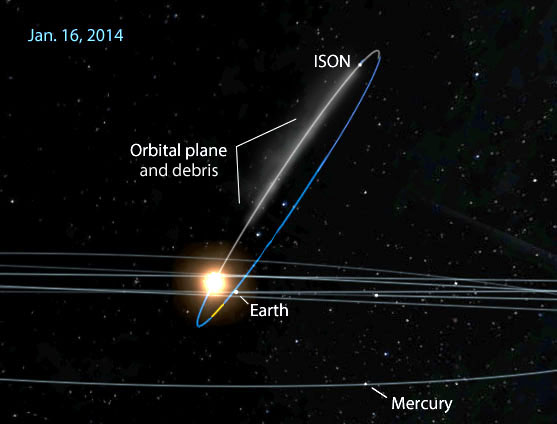Published on Dec 30, 2013
This is the latest imaging on Comet
Ison, Or , What is left of it! As we can see , it looks like we have a
massive debris trail following where Ison Should Have Been !
http://groups.yahoo.com/neo/groups/co...
https://secure.flickr.com/photos/hiro...
https://twitter.com/SungrazerComets/s...
http://groups.yahoo.com/neo/groups/co...
https://secure.flickr.com/photos/hiro...
https://twitter.com/SungrazerComets/s...
.....
Jan. 16 May Be Last Best Chance to Search for Comet ISON’s Remains

Comet
ISON revolves around the sun in steeply inclined orbit. Earth will pass
through the plane of that orbit on Jan. 16. As we look “up” toward the
comet, ISON’s dust stacks up along our line of sight and could appear
temporarily brighter. Credit: solarsystemscope.com with annotations and
additions by Bob King
On and around that date, we’ll be staring straight across the sheet of debris left in the comet’s path. Whatever bits of dust and grit it left behind will be “visually compressed” and perhaps detectable in time exposure photos using wide-field telescopes. To understand why ISON would appear brighter, consider the bright band of the Milky Way. It stands apart from the helter-skelter scatter of stars for the same reason; when we look in its direction, we peer into the galaxy’s flattened disk where the stars are most concentrated. They stack up to create a brighter band slicing across the sky. Similarly, dust shed by Comet ISON will be “stacked up” from Earth’s perspective on the 16th.
.....









No comments:
Post a Comment
Hello and thank you for visiting my blog. Please share your thoughts and leave a comment :)